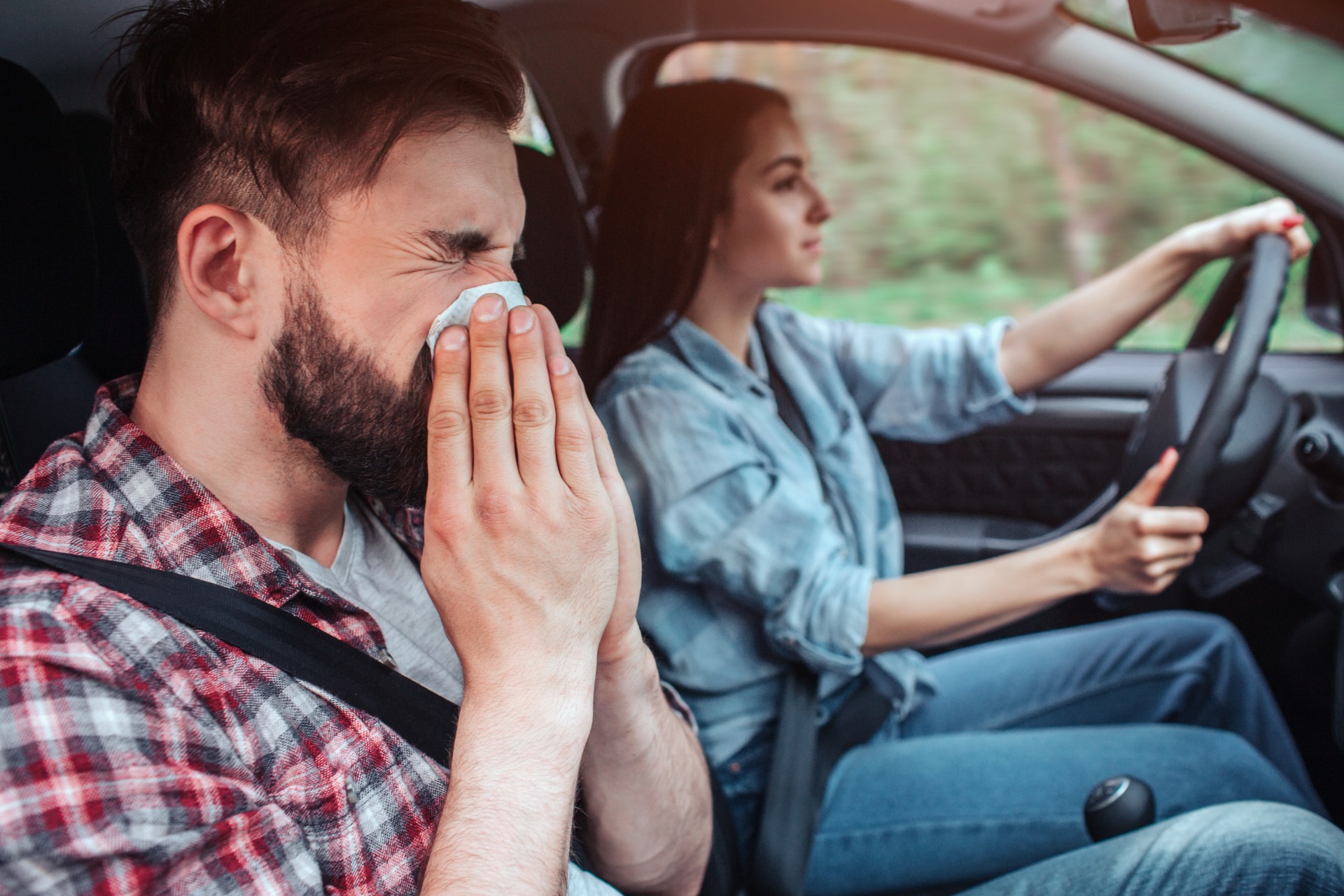The first day of Spring is still a few weeks away, but if you look closely the signs are all there; from daffodils and crocuses sprouting up at the side of the roads to blossom on the trees. Spring is definitely in the air, but what does that mean for those of us that suffer from allergies and hay fever in particular? Runny nose, itchy eyes, sneezing all the time – you know the symptoms, but when it comes to driving it can prove to be a struggle, that’s why we’ve put together some top tips to try and minimise the effects that having an allergy can have on you and when it comes to driving.

Keep car windows closed
This may seem like an obvious one but driving with the windows open will cause pollen to blow directly into the vehicle and circulate around the cabin. Driving with the windows closed will prevent pollen from getting in your eyes and impairing your vision whilst you’re driving.
TIP: Wearing sunglasses, particularly wraparound sunglasses, will also help protect your eyes from dust and pollen but make sure they don’t have a negative impact on your vision, especially through windows which are already tinted.
Clean your car
Ensure that your car is clean and dust free to try and minimise the effect it will have on your symptoms. On the warmer days, avoid driving with the windows down, try using the air conditioning or ventilation instead and make use of air re-circulation where possible. For those suffering from hay fever it’s also important that pollen filters are changed regularly.
Stock up on tissues
Itchy, watery eyes, a runny nose right down to non-stop sneezing and coughing – they’re all signs that you’re suffering from of hay fever, so be sure to keep a box of tissue close to hand, especially when driving, to avoid taking your eyes off the road.
TIP: Try dabbing a small amount of Vaseline around the outside of your nostrils – this is one we swear by when it comes to preventative measures as it will trap the pollen and stop it from being inhaled and causing irritation.
Medication
Your GP may advise you to take anti-histamines or over-the-counter medicines to control the symptoms, but make sure you take the non-drowsy ones. If you’re unsure, read the leaflet or speak to your GP or pharmacy for more advice.
Make sure you’re fit to drive
If you need to get somewhere but don’t feel well enough to drive, find you’re particularly tired or if your eyes are extremely watery, consider whether you feel safe to drive. If you think your driving could be impaired, try and sort alternative travel arrangements but whatever you do, don’t drive yourself - you may just end up sneezing and travelling up to 50ft with your eyes closed and losing control of your vehicle.
Anyone who hasn’t been diagnosed with hay fever and is feeling under the weather, should arrange to see their GP as soon as possible. What you might think is just a slight cold can become a major distraction, so get it checked before it gets worse.
Got any driving tips of your own when it comes to handling allergies? If so, let us know via our social media pages.
Other CarCliq guides that you might be interested in:
Staying Hydrated Behind The Wheel
8 Essentials to keep in your car
Don’t Be In The Dark About Driving
For more CarCliq Guides, click here.